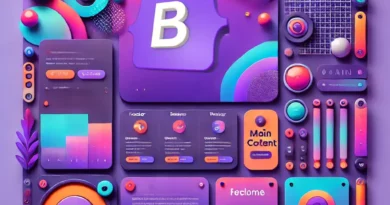Reading: A Neural Symphony
How modern neuroscience is revealing the extraordinary complexity behind humanity’s most transformative skill
You’re doing it right now—reading these words with seemingly effortless grace. Your eyes glide across each line, instantly transforming abstract symbols into meaning, emotion, and understanding. But beneath this deceptively simple act lies one of the most sophisticated neural performances your brain will ever conduct: a complex symphony of interconnected networks that transform mere marks on a page into the full richness of human thought.
The Great Revelation: Reading Is Anything But Simple
Recent groundbreaking research from neuroscientists has shattered our assumptions about how reading works in the brain. A comprehensive meta-analysis summarising 163 studies involving over 3,000 adult readers has revealed that reading is far from the straightforward process we once imagined. Instead, our brains dynamically reconfigure themselves for each reading task, orchestrating different neural networks depending on whether we’re recognising a single letter, processing a word, or comprehending entire paragraphs.
This discovery represents a paradigm shift in our understanding of literacy. Rather than relying on a single, fixed neural pathway, the reading brain demonstrates remarkable plasticity—adapting its approach based on the complexity and nature of each reading challenge it encounters.
The Architecture of Understanding: How Different Tasks Light Up Different Networks
The research reveals a fascinating hierarchy of brain activation during reading tasks:
Letter Recognition: The Foundation When we encounter individual letters, small, specialised visual regions in the left hemisphere spring into action. These areas, honed through years of exposure to written language, form the foundational building blocks of literacy. They’re the brain’s equivalent of a highly trained orchestra’s first violin section—essential, precise, and perfectly attuned to their specific role.
Word Processing: Building the Ensemble As we progress to reading whole words, the brain recruits significantly larger networks. Memory centres activate alongside sound-processing regions, creating rich associations between visual symbols and their phonetic and semantic meanings. This expansion represents the moment when our neural orchestra grows from a solo performance to a chamber ensemble.
Sentence and Text Comprehension: The Full Symphony When we read sentences and longer texts, the brain’s performance becomes truly magnificent. Syntax and meaning centres coordinate with working memory hubs, creating the deep contextual understanding that allows us to follow complex narratives, grasp subtle arguments, and experience the full emotional resonance of written language. This is where our neural symphony reaches its crescendo, with multiple sections playing in perfect harmony.
The Surprising Tale of Silent vs. Aloud Reading
One of the most counterintuitive discoveries concerns the difference between reading silently and reading aloud. When we read aloud, our brains predictably activate auditory and motor-speech areas, coordinating the complex task of transforming visual input into spoken output.
But silent reading tells a more fascinating story. Far from simply “turning off” the speech centres, silent reading activates executive networks that create internal speech whilst simultaneously suppressing vocalisation. This represents mental multitasking at its finest—our brains are literally talking to themselves whilst preventing that conversation from becoming audible. It’s a neurological feat that showcases the incredible sophistication of our reading machinery.
The Dual-Route Discovery: How Familiarity Shapes Processing
Perhaps one of the most elegant discoveries involves how our brains handle familiar versus unfamiliar words. The dual-route theory of reading, supported by extensive neuroimaging evidence, demonstrates that our brains use distinct pathways depending on word familiarity.
When encountering nonsense words like “blost” or unfamiliar terms, the brain engages phonological pathways—essentially sounding out the word using learned letter-sound relationships. However, familiar words bypass this laborious process, directly accessing stored memory representations and their associated meanings. This dual-route system explains why experienced readers can quickly recognise thousands of words whilst still being able to tackle completely novel terms.
This discovery has profound implications for understanding reading difficulties and developing more effective literacy instruction methods.
The Cerebellum: Movement Centre Turned Language Hub
One of the study’s most unexpected revelations concerns the cerebellum—the brain region traditionally associated with balance and movement coordination. Research consistently shows the cerebellum playing a crucial role across all reading tasks, particularly during silent reading and word recognition.
This finding suggests that the cerebellum’s role in human cognition extends far beyond its classical motor functions. The Cerebellar Deficit Hypothesis proposes that this region contributes to phonological processing, skill automatisation, and timing—all crucial elements of fluent reading. The cerebellum may serve as a kind of neural metronome, helping coordinate the precise timing required for smooth, efficient reading.
Real-World Reading vs. Laboratory Tasks: Bridging the Gap
Recent advances in neuroimaging technology, including fixation-related fMRI studies, are beginning to examine naturalistic reading—how our brains actually process text in real-world conditions rather than artificial laboratory settings. This research reveals important differences between how we read in controlled experiments versus how we naturally engage with books, articles, and digital content.
These insights are reshaping our understanding of reading difficulties like dyslexia. Studies of dyslexia now focus on disrupted network interactions rather than simple regional hypoactivation, revealing that reading difficulties often stem from communication problems between different brain networks rather than isolated deficits.
The Future of Reading Research
As technology advances, our ability to peer into the reading brain continues to improve. Cutting-edge research in 2024 has demonstrated the ability to reconstruct mental images from brain signals, suggesting we may soon be able to “read” the brain’s reading process in unprecedented detail.
These developments promise to revolutionise our approach to literacy education, reading interventions, and support for individuals with reading difficulties. By understanding exactly how successful readers’ brains operate, we can develop more targeted and effective methods for helping struggling readers.
The Marvel of Every Page Turn
The next time you settle into a comfortable chair with your favourite book or scroll through an engaging article on your device, take a moment to appreciate the neurological marvel occurring in your skull. You’re not simply processing words—you’re conducting a magnificent neural symphony.
Every letter recognition, every word comprehension, every leap of contextual understanding represents the coordinated effort of multiple brain networks, each perfectly adapted to their role in the reading process. From the precise visual analysis conducted by your left hemisphere to the surprising contributions of your cerebellum, from the dual-route processing that handles both familiar and novel words to the executive networks that create and suppress internal speech—your brain is performing cognitive feats that represent millions of years of evolution and decades of individual learning.
Reading transforms us from isolated individuals into participants in humanity’s greatest conversation, one that spans cultures, centuries, and continents. That this transformation happens through such an intricate and beautiful neural dance only makes the act more remarkable. In every book we read, every article we absorb, every story that moves us, we’re witnessing the profound collaboration between human creativity and the most sophisticated information-processing system in the known universe: the reading brain.
The ongoing research into reading networks continues to reveal new insights about this fundamental human capability. As our understanding deepens, we move closer to unlocking the full potential of literacy education and supporting every individual’s journey toward reading mastery.
We’d love your questions or comments on today’s topic!
For more articles like this one, click here.
Thought for the day:
“If a person loves only one other person and is indifferent to all others, his love is not love but a symbiotic attachment, or an enlarged egotism.” Erich Fromm



